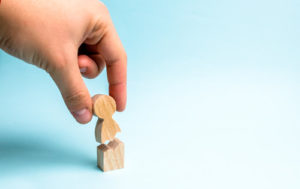The impact of trauma poses a substantial risk to students–something that is recognized more now than ever before. Increased reports of trauma and tragic circumstances resulting from trauma–such as increases in at-risk behaviors, and even suicide–are bonafide challenges schools face today.
Students need adults and school communities that foster for them the freedom to make their own decisions and to learn in a safe environment while at liberty to take reasonable risks. That’s the framework for learning and growing at our school, and the byproducts are happier, healthier students whose development is incubated in both a student-specific and schoolwide manner.
Related content: Student wellbeing is transformative
Following are strategies we employ with our students that help them succeed. These strategies are easily replicable in any school, because they use existing resources. “Stacking” strategies together like this perpetuates a cycle of success that reverses the status quo.
Staff mentoring
There are plenty of well-researched benefits of mentoring. This is a Positive Behavior Support in Schools (PBSIS) endorsed program, and it offers a positive adult connection for students who would not otherwise have a such an opportunity for a role model in their lives. Organized through our guidance office, educators sign up voluntarily.
Students who meet with a mentor:
- Are 52 percent less likely than their peers to skip a day of school
- Are 55 percent more likely to be enrolled in college
- Are 46 percent less likely than their peers to start using illegal drugs and 27 percent less likely to start drinking
- Are 81 percent more likely to participate regularly in sports or extracurricular activities than those who do not
Older students mentoring younger students
What better way to engage younger secondary students than to get them connected to upperclassmen that they admire? This program involves high school volunteers who visit middle school and talk about their own personal challenges. Following the assembly program, high-schoolers meet with individual students and in small groups.
The program allows us to tap into areas of concern and trauma, and it also helps us provide supports which, without high school students leading the way, may have been missed.
My favorite example happened one year when a high school senior stood on stage and announced, “I like pizza.” Thundering applause of agreement. “I like playing video games.” Louder applause. “I like hanging out with my friends.” Still louder. “And, I am gay.” Silence. After what felt like an eternal pause, he added. “And I tell you that last fact because I am so much more than just that.”
The program returns every year and it is a student and faculty favorite, for all the right reasons. Additionally, this is a double advantage because when people share their trauma, it can have a powerful healing effect for them.
When you move the body, you move the mind
We know from scientific research that movement is not only good for your body and physical health, it is also very good for your mind. In fact, it decreases depression, anxiety, sleep disturbance and even PTSD.
There are a couple of different ways to use this strategy. First, consider embracing a daily school-wide or class-wide morning routine, such as a 3-minute meditation. While you may think this is not exercise, mindfulness activities can have a profound impact on student physiology, subsequently enhancing both student wellness and achievement. This kind of mind and body activity can set the stage for a cascade of positive effects throughout a child’s day.
The second way to look at this is in advance of a big test, or standardized assessment. Have students follow along an exercise routine right in the classroom- you can find an example right on YouTube and yes, these can be done right in class. Better yet, have your physical education teacher make a video–students are likely to connect more with their very own teachers and play energetic or motivational background music. Getting the body activated in this way is important, especially right before a long period of sitting, and it inspires a child’s mind to think more creatively and critically.

